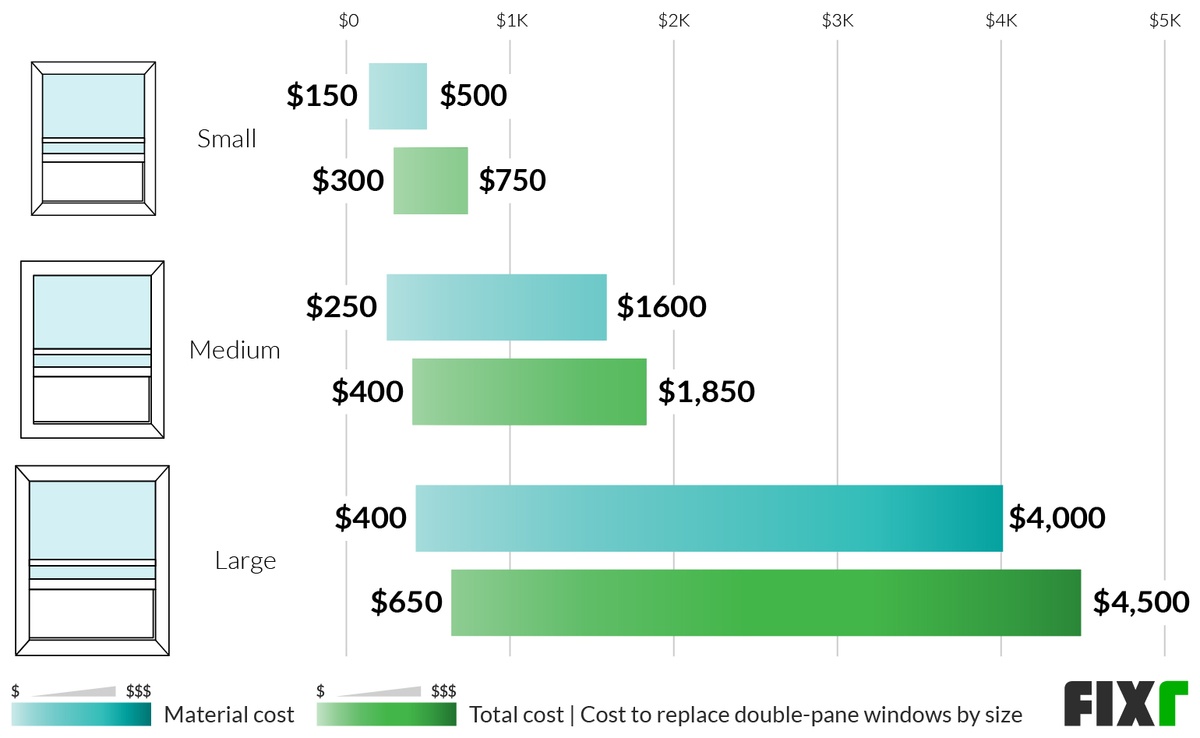New window replacement cost takes center stage in this informative piece, shedding light on various factors affecting prices, different types of windows and their cost variations, regional price differences, and cost-saving tips for homeowners. Dive into the world of window replacements with a wealth of knowledge awaiting you.
Cost Factors of New Window Replacement: New Window Replacement Cost

When considering the cost of new window replacement, several factors come into play that can influence the overall price. These factors include material quality, window size, installation complexity, and energy-efficient features.
Material Quality
The quality of the materials used for the windows can have a significant impact on the cost of replacement. High-quality materials such as vinyl or fiberglass may cost more initially but can offer better durability and energy efficiency, potentially saving money in the long run.
Window Size
The size of the windows being replaced will also affect the cost. Larger windows require more materials and labor to install, resulting in a higher overall price compared to smaller windows. Additionally, custom-sized windows may come with a higher price tag due to the specialized manufacturing process.
Installation Complexity, New window replacement cost
The complexity of the installation process can impact the cost of window replacement. Windows that require additional work, such as structural modifications or intricate designs, may incur higher labor costs. It is essential to consider the complexity of the installation when estimating the overall cost.
Energy-Efficient Features
Incorporating energy-efficient features into new windows can increase the initial cost of replacement. However, these features can lead to long-term savings on energy bills by improving insulation and reducing heat loss. Factors such as Low-E coatings, multiple panes, and gas fills can contribute to the overall cost but offer benefits in terms of energy efficiency and comfort.
Types of Windows and Their Cost Variation
When considering the cost of replacing windows, it is essential to understand the variations in prices based on the different types of windows available in the market. Each type of window comes with its unique design, functionality, and material, which ultimately impacts the replacement cost.
Single-Hung Windows
Single-hung windows are a popular choice due to their simplicity and affordability. These windows feature a movable bottom sash while the top sash remains fixed. The cost of replacing single-hung windows is generally lower compared to other types due to their straightforward design.
Double-Hung Windows
Double-hung windows offer more versatility as both the top and bottom sashes can be opened. This added functionality often comes with a higher price tag compared to single-hung windows. The cost of replacing double-hung windows can vary depending on the size, material, and additional features.
Casement Windows
Casement windows are hinged on one side and open outward, providing excellent ventilation and unobstructed views. The cost of replacing casement windows can be higher due to their more complex design and the need for sturdy hardware to support the outward swinging motion.
Picture Windows
Picture windows are fixed windows that do not open, designed to frame a beautiful view and allow natural light into the room. While the cost of replacing picture windows may be lower since they do not have moving parts, the size of the window and the quality of the glass can impact the overall price.Overall, the cost variation among different window types is influenced by factors such as design complexity, functionality, size, material quality, and additional features.
It is essential to consider these aspects when planning for window replacement to ensure the best value for your investment.
Regional Price Disparities in Window Replacement
When it comes to window replacement costs, regional price disparities are a common occurrence due to various factors that influence the overall price. Factors such as labor costs, material availability, and local regulations play a significant role in determining the cost of new window replacement in different states or areas.
Urban vs. Rural Locations
One of the key factors that can impact the cost of new window replacement is whether the location is urban or rural. In urban areas, where labor costs are typically higher and there is more demand for construction services, the cost of window replacement tends to be higher compared to rural areas.
Additionally, material availability and transportation costs can also contribute to the price disparity between urban and rural locations.
Cost Savings Tips for New Window Replacement
When it comes to replacing windows in your home, there are several cost-saving tips that can help you stay within budget while still getting quality results. Whether you’re considering a DIY approach or hiring professionals, making smart choices along the way can lead to significant savings.
DIY Installation vs. Professional Contractors
One of the biggest cost-saving tips for new window replacement is deciding whether to tackle the installation yourself or hire professional contractors. While DIY installation can save you money on labor costs, it’s important to consider your skill level and the complexity of the project.
Mistakes during installation can lead to additional expenses down the road. On the other hand, hiring professionals ensures proper installation and may come with warranties for added peace of mind.
Cost-Effective Strategies for Selecting Energy-Efficient Windows
Investing in energy-efficient windows can lead to long-term cost savings on your energy bills. When selecting windows, consider factors such as the U-factor, solar heat gain coefficient, and visible transmittance. Look for windows with Energy Star certification and consider options like double-pane or triple-pane glass for better insulation.
While energy-efficient windows may have a higher upfront cost, the savings on energy bills over time can make them a cost-effective choice.
Last Word

In conclusion, navigating the realm of new window replacement costs involves understanding the influencing factors, types of windows available, regional disparities in pricing, and effective cost-saving strategies. Armed with this knowledge, homeowners can make informed decisions when embarking on window replacement projects.
FAQ Summary
What are some lesser-known factors that can influence new window replacement costs?
Factors like the need for custom sizing, additional hardware upgrades, or specialized installation requirements can also impact the overall cost.
Is it worth investing in energy-efficient windows despite the higher upfront cost?
Yes, energy-efficient windows can lead to long-term cost savings through reduced energy bills, making them a worthwhile investment.
Are there any specific government incentives or rebates available for homeowners installing new windows?
Some regions offer tax credits or rebates for installing energy-efficient windows, so it’s worth checking with local authorities for potential savings.